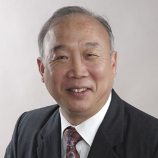Advances of Membrane Technology for Liquid Separation and Purification
A special issue of Membranes (ISSN 2077-0375). This special issue belongs to the section "Membrane Applications".
Deadline for manuscript submissions: closed (28 February 2022) | Viewed by 12645
Special Issue Editors
Interests: applied membrane research; forward osmosis membrane and process development for liquid purification; ultrafiltration membrane for water treatment; membrane and system for liquid degassing
Interests: membranes for water reuse; desalination; gas separation; biofuel separation; energy development and CO2 capture
Special Issues, Collections and Topics in MDPI journals
Special Issue Information
Dear Colleagues,
In recent years, the focus of membrane research and development is seen shifting from maturing water-based separation (e.g., portable water, process water and wastewater treatment) to power generation, pharmaceutical production, food and beverage processing, and separations needed for manufacturing chemicals, electronics, fuels and a range of other liquid products. Behind this is the growing demands on reducing energy, saving resources and safe processing in various industrial processes. For liquid separation and purification, membrane materials and membrane devices are faced with new challenges of short lifetime, low productivity and low separation efficiency as a result of high operation temperature, in direct contact with harsh chemicals and strong solvents, extreme pH levels, and molecules to be separated with close chemical similarity, etc. Therefore, more robust and performing membrane materials and devices are critical for employing membrane technology for liquid separation and purification in commercial scale.
This special issue aims to collect research on membrane and membrane devices for liquid separation and purification to highlight the advances in membrane development, and to gain insight into the future direction and research focus in relevant fields.
Dr. Jincai Su
Prof. Dr. Neal Tai-Shung Chung
Guest Editors
Manuscript Submission Information
Manuscripts should be submitted online at www.mdpi.com by registering and logging in to this website. Once you are registered, click here to go to the submission form. Manuscripts can be submitted until the deadline. All submissions that pass pre-check are peer-reviewed. Accepted papers will be published continuously in the journal (as soon as accepted) and will be listed together on the special issue website. Research articles, review articles as well as short communications are invited. For planned papers, a title and short abstract (about 100 words) can be sent to the Editorial Office for announcement on this website.
Submitted manuscripts should not have been published previously, nor be under consideration for publication elsewhere (except conference proceedings papers). All manuscripts are thoroughly refereed through a single-blind peer-review process. A guide for authors and other relevant information for submission of manuscripts is available on the Instructions for Authors page. Membranes is an international peer-reviewed open access monthly journal published by MDPI.
Please visit the Instructions for Authors page before submitting a manuscript. The Article Processing Charge (APC) for publication in this open access journal is 2700 CHF (Swiss Francs). Submitted papers should be well formatted and use good English. Authors may use MDPI's English editing service prior to publication or during author revisions.







